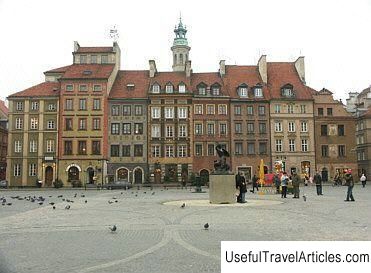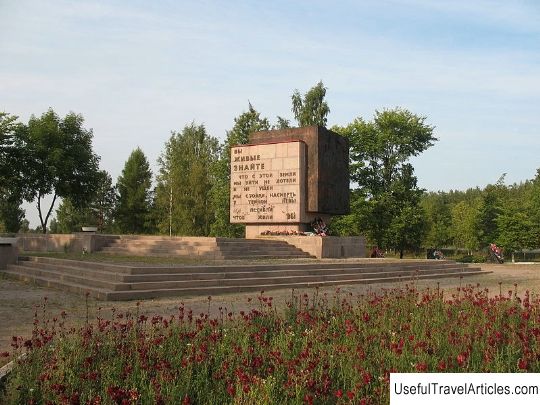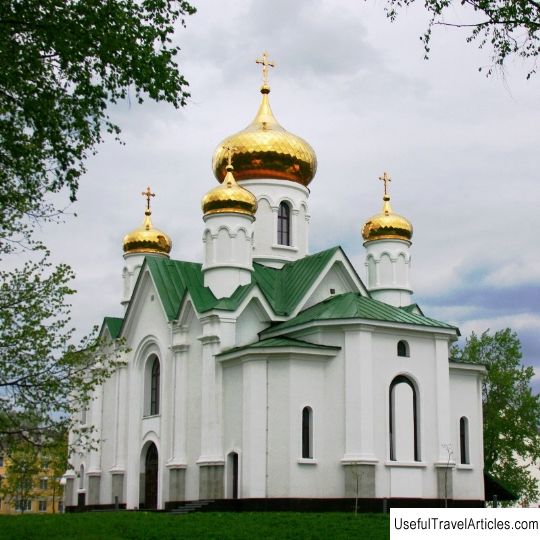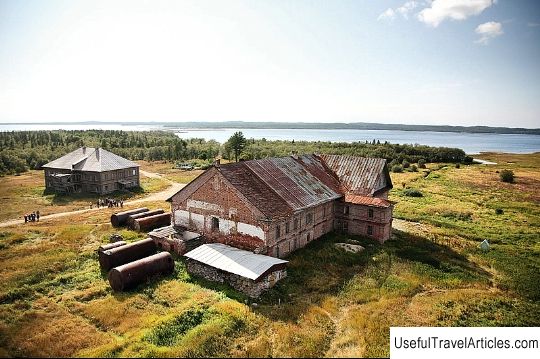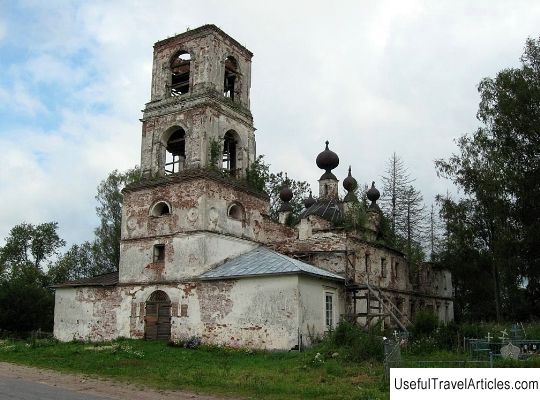Museum ”Nevsky Piglet” in the village of Dubrovka description and photo - Russia - Leningrad region: Vsevolozhsky district
Rating: 7,6/10 (320 votes) 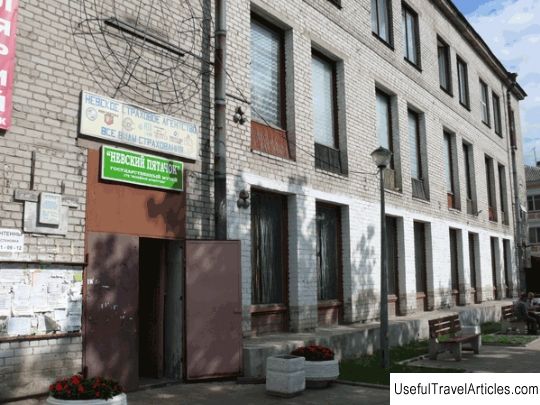
Museum "Nevsky Pyatachok" in the village of Dubrovka description and photo - Russia - Leningrad region: Vsevolozhsky district. Detailed information about the attraction. Description, photos and a map showing the nearest significant objects. Photo and descriptionThe Nevsky Piglet Museum is located in the village of Dubrovka, Vsevolozhsky District, Leningrad Region. The State Museum "Nevsky Pyatachok" was founded in 1963 on the initiative and with the participation of veterans of the Great Patriotic War. Initially, it was located in the House of Culture, but after the fire in 1991, many exhibits and priceless relics were lost. In 1998, the museum was revived with the active participation of Dubrovka residents. Students of the local school helped to restore the names of the soldiers who died in these places. The official opening of the museum took place in 1999. The museum received the status of the State Museum and became part of the LO GUK “Museum Agency” as a branch. The head of the museum is Osipov Alexander Ivanovich. The museum has over 700 exhibits, among which - all kinds of small arms, devices and devices for warfare, which were used by the warring parties, personal belongings and household items of military personnel. In 1941-1943. on the banks of the Neva, where the village of Dubrovka is located, bloody battles took place, during which Soviet troops attempted to break the blockade. More than 200 thousand of our soldiers left their lives on a tiny piece of land reclaimed from the Nazi invaders, which was called "Nevsky Piglet". This confrontation lasted 285 days: from September 19, 1941 to April 29, 1942 and from September 16, 1942 to March 1943. On September 8, 1941, the fascist German army broke through to the outskirts of Leningrad. She seized territories from the Gulf of Finland along the Ligovo, Yam-Izhora line, Krasnogvardeysk and on the left bank of the Neva - Shlisselburg, Ivanovskoe, up to Lake Ladoga. Leningrad found itself isolated. Neighboring residents, refugees from the territories occupied by the Germans, as well as the personnel of the Baltic Fleet and 3 armies, were not mentioned in the media. In this situation, the government took all possible measures to remove Leningrad from the blockade. In September 1941, it was decided by the troops of the Leningrad Front to seize a bridgehead in the area of Moscow Dubrovka, advance further and liberate the Mga station. To increase the pressure on the Germans, units of the Volkhov Group of Forces marched towards the units of the Leningrad Front with a similar task - to free the Moscow State University. The bridgehead was recaptured from the Nazis on the night of September 19-20. A small piece of land was shot up and down. Thousands of soldiers laid their heads here. Far away in the headquarters, it was called "Nevsky Pyatachk", because on the map this bridgehead could be covered with a coin of 5 kopecks. Replenishment arrived here nonstop. The wounded were sent to the right bank, and those who died remained here. The losses of the generals did not bother, no one kept the names of the soldiers sent to this bridgehead. Throughout the autumn and winter, the Germans held back the attacks of the Soviet troops, but as soon as the Neva was opened, and communication between the banks ceased, the defenders of the bridgehead were destroyed. On September 26, 1942, the situation repeated itself: the Red Army men selflessly captured the "Nevsky Pyatachok" and began to transport reinforcements here. After several unsuccessful operations in 1943, the commanders managed to carry out the crossing of the Neva River and push the Germans away from Ladoga. At the same time, hundreds of thousands of our soldiers were laid on the battlefields. On February 17, 1943, the German command, trying to save their troops, began to withdraw troops away from Piglet. After the war, the country's leadership preferred not to remember the details of the events at the "Nevsky Pyatachka". The soldiers who died here were not even buried. They remained lying in the trenches and craters. The museum has a diorama of 3x10 m, which reflects the bloody events of those days. The atmosphere of wartime can be felt by entering a real dugout and through military household items. A special tone for the museum is set by commemorative plaques, on which are carved lists of soldiers who were buried in Dubrovskaya land. A museum tour is also held on the banks of the Neva. From here you can see the whole panorama of the Nevsky bridgehead, whose defenders fought to death in the battle for Leningrad. Now there is a memorial complex "Nevsky Pyatachok". The main direction of the museum's work is the compilation of the Book of Memory of the Dubrovka village, where the data of all the defenders of the Motherland who died and were buried here are entered. The work is carried out both on the basis of data from military archives and on the basis of search activities. The Museum is actively involved in social activities. For this, the museum has received awards and diplomas. The doors of the museum are always open to all those who are aware of which country they live in.                We also recommend reading Church of St. Peter and Paul description and photo - Bulgaria: Dobrinishte Topic: Museum ”Nevsky Piglet” in the village of Dubrovka description and photo - Russia - Leningrad region: Vsevolozhsky district. |
